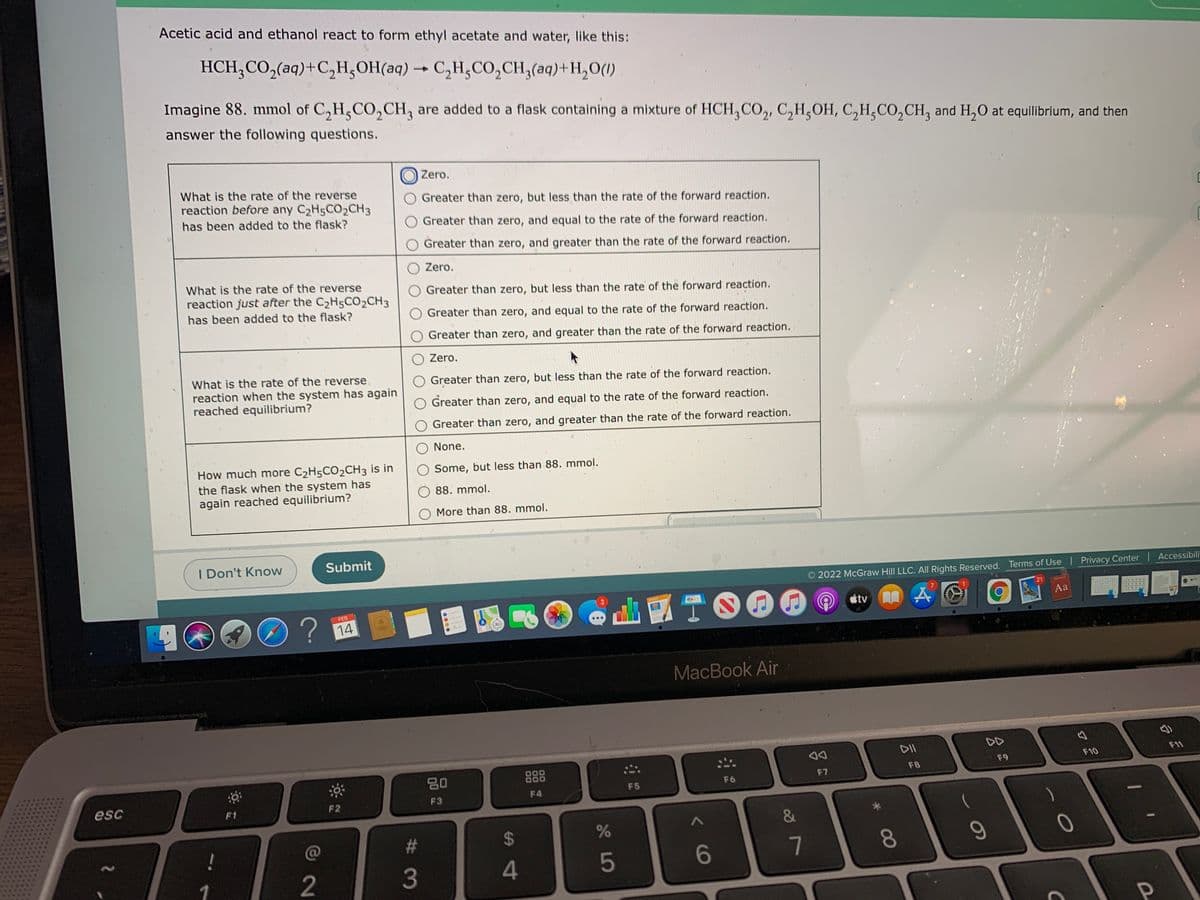Acetic acid and ethanol react to form ethyl acetate and water, like this: HCH,CO,(aq)+C,H,OH(aq) C,H,Co,CH,(aq)+H,0(1) Imagine 88. mmol of C,H,CO,CH, are added to a flask containing a mixture of HCH, CO, C,H,OH, C,H,CO,CH, and H,0 at equilibrium, and then answer the following questions. O Zero. What is the rate of the reverse reaction before any C2H5CO2CH3 has been added to the flask? O Greater than zero, but less than the rate of the forward reaction. O Greater than zero, and equal to the rate of the forward reaction. O Greater than zero, and greater than the rate of the forward reaction. O Zero. What is the rate of the reverse reaction just after the C2H5CO2CH3 O Greater than zero, but less than the rate of the forward reaction. has been added to the flask? O Greater than zero, and equal to the rate of the forward reaction. O Greater than zero, and greater than the rate of the forward reaction. O Zero. What is the rate of the reverse reaction when the system has again reached equilibrium? O Greater than zero, but less than the rate of the forward reaction. O Greater than zero, and equal to the rate of the forward reaction. O Greater than zero, and greater than the rate of the forward reaction. O None. How much more C2H5CO2CH3 is in the flask when the system has again reached equilibrium? O Some, but less than 88. mmol. O 88. mmol. O More than 88. mmol.
Thermochemistry
Thermochemistry can be considered as a branch of thermodynamics that deals with the connections between warmth, work, and various types of energy, formed because of different synthetic and actual cycles. Thermochemistry describes the energy changes that occur as a result of reactions or chemical changes in a substance.
Exergonic Reaction
The term exergonic is derived from the Greek word in which ‘ergon’ means work and exergonic means ‘work outside’. Exergonic reactions releases work energy. Exergonic reactions are different from exothermic reactions, the one that releases only heat energy during the course of the reaction. So, exothermic reaction is one type of exergonic reaction. Exergonic reaction releases work energy in different forms like heat, light or sound. For example, a glow stick releases light making that an exergonic reaction and not an exothermic reaction since no heat is released. Even endothermic reactions at very high temperature are exergonic.

Trending now
This is a popular solution!
Step by step
Solved in 5 steps




